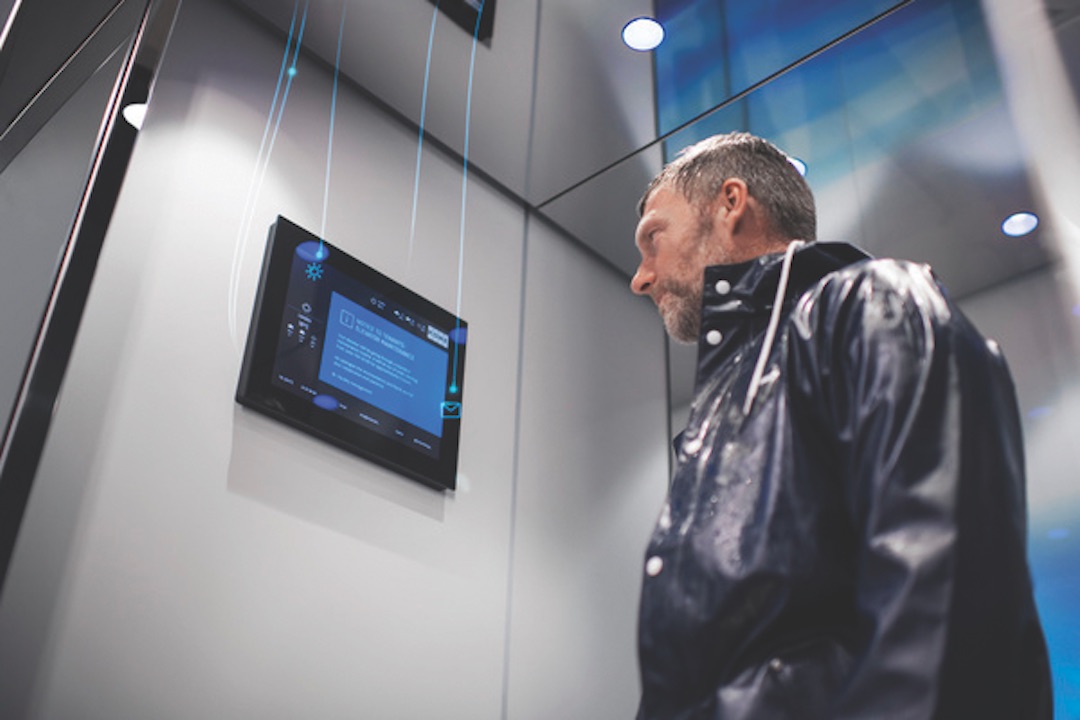KONE Corporation has announced a new elevator technology that could make it possible for supertall buildings to reach greater heights by eliminating several problems of existing elevator technology. The firm's new UltraRope hoisting system uses a rope with a carbon-fiber core and high-friction coating, rather than conventional steel rope. UltraRope is comparatively lightweight, requiring 15% less energy for moving hoisting ropes, compensating ropes, counterweights, elevator cars, and passengers, according to KONE.
In addition, carbon fiber resonates at a different frequency than steel and other typical building materials, a property that is predicted to reduce downtime attributable to building sway. KONE estimates that the product will only have to be replaced half as often as steel rope. The manufacturer claims that the new technology will make it practical for elevators to travel heights of up to 1,000 meters—twice as high as is possible with current technology. (Elevators in the Burj Khalifa, an 828-meter-tall building, will travel a maximum of 504 meters.)
The technology could help facilitate the creation of high-density housing and other urban projects. "This is finally a breakthrough on one of the 'holy grail' limiting factors of tall buildings: that is, the height to which a single elevator could operate before the weight of the steel rope becomes unsupportable over that height," says Antony Wood, Executive Director of the Council for Tall Buildings and Urban Habitat.
(http://download.kone.com/ultrarope/index.htm)
Related Stories
Data Centers | Oct 14, 2016
Where data centers meet design
As technology continues to evolve, we have to simultaneously adapt and help our clients think beyond the short term, writes Gensler's Martin Gollwitzer.
Architects | Oct 13, 2016
Dallas architects recognized at 2016 AIA Dallas Built Design Awards
Six Texas-based projects lauded for design excellence.
Architects | Oct 11, 2016
A good imagination and a pile of junk: How maker culture is influencing the way AEC firms solve problems
“Fail” is no longer a dirty four-letter word: for maker culture, it has become a crucial stop along the way
Architects | Oct 4, 2016
Video blog: How to future-proof your workplace
Larry Lander, a Principal with PDR and a registered architect, discusses how modularity can improve a workplace for the business and the individual.
Architects | Sep 30, 2016
Ugly soviet parking garage takes on appearance of a cascading waterfall
Architect Ignas Lukaskas worked in conjunction with Vieta and the Vilnius Street Art festival to transform the building.
Architects | Sep 30, 2016
HOK partners with Delos to accredit its designers as wellness professionals
They are also working on the first WELL-certified city district, in Tampa, Fla.
Architects | Sep 29, 2016
Join Adrian Smith + Gordon Gill Architecture’s partners Adrian Smith, Gordon Gill, and Robert Forest for “AS+GG At Ten”
The event is a presentation of their work spanning the past 10 years.
Architects | Sep 29, 2016
Design culture in Dubai draws increased international attention
Innovation and sustainability drive an increasingly global design culture in Dubai.
Architects | Sep 29, 2016
Space architecture is making the leap from science fiction to reality
3D printed domes and inflatable living spaces are just some of the ideas for how to create habitable spaces on Martian planets.
Reconstruction & Renovation | Sep 28, 2016
Architecture conservation efforts begin at Salk Institute of Biological Studies
Getty-led research and funding leads to important site repairs and long-term conservation management planning.
















